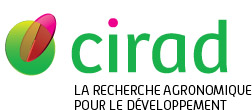Sauvadet Marie, Harmand Jean-Michel, Deleporte P., Martin A., Zarah-Shailia F., Villenave Cécile, Jimenez A., Mareschal Louis, Bouillet Jean-Pierre, Laclau Jean-Paul, Plassard Claude, Trap Jean, Robin Agnès. 2025. N cycling increase after savanna afforestation with Eucalyptus or Acacia is reflected in the growth of soil ammonia-oxidizing archaea and nematode bacterial-feeders. Applied Soil Ecology, 209:106027, 9 p.
|
Version publiée
- Anglais
Sous licence  . .
2025_AppSoil_a.pdf Télécharger (844kB) | Prévisualisation |
Résumé : In tropical humid Africa, sandy soils under periodically burnt herbaceous savannas exhibit generally low carbon (C) content and nitrogen (N) availability. Savanna afforestation may overcome these limitations through changes in soil functioning, yet these processes still need to be explored. In this study, we investigated whether changes in the composition of soil micro-food web may explain soil C and N cycling increases following savanna afforestation. We conducted a 7-year experiment in Congo including Eucalyptus and N2-fixing Acacia monocultures and Eucalyptus-Acacia mixtures established on former herbaceous savannas. We assessed in each of these modalities the soil attributes: organic C and N, pHH2O, nitrate, ammonium, net C and N mineralization and nitrification rates, along with the abundances of bacteria, fungi, nematodes, ammonia-oxidizing archaea (AOA) and bacteria (AOB) in the top 10 cm layer. Afforestation of savannas with Eucalyptus for timber production increased soil C by 1.7 times, soil net N mineralization rates by 1.9 times and soil inorganic nitrogen by 2.5 times. Mixed Acacia- Eucalyptus and Acacia monoculture plantations further improved the rate of net nitrogen mineralization by a factor of 1.4 and soil inorganic N by a factor of 2.3 compared with Eucalyptus monocultures. These changes were associated with a gradual increase in AOA abundance from savanna to Eucalyptus monoculture, Eucalyptus-Acacia mixtures and finally Acacia monoculture. Savanna afforestation resulted in a significant increase in the absolute abundance of bacterial-feeding nematodes by 678 %, but to a decrease in the abundance of both fungal-feeders, and omnivores and predators. Increase in N cycling was positively associated with both AOA and nematode bacterial-feeder abundances, underlining the importance of monitoring micro-food web structure to understand better how land use changes affect soil biogeochemical cycling in the context of tropical afforestation.
Mots-clés Agrovoc : Eucalyptus, cycle de l'azote, utilisation des terres, cycle du carbone, Arénosol, propriété physicochimique du sol, sol tropical, fertilité du sol, conservation des sols, monoculture, champignon du sol, nitrification, matière organique du sol
Mots-clés géographiques Agrovoc : Congo, Brésil
Mots-clés libres : Ammonia-oxidizing archae, Bacteria, Fungi, Nematodes, Land use change, N2-fixing tree species
Agences de financement hors UE : Agence Nationale de la Recherche
Projets sur financement : (FRA) Intensification écologique des écosystèmes de plantations forestières. Modélisation biophysique et évaluation socio-économique de l'association d'espèces fixatrices d'azote
Auteurs et affiliations
-
Sauvadet Marie, CIRAD-PERSYST-UMR Eco&Sols (FRA)
 ORCID: 0000-0002-7520-8565 - auteur correspondant
ORCID: 0000-0002-7520-8565 - auteur correspondant
-
Harmand Jean-Michel, CIRAD-PERSYST-UMR Eco&Sols (CMR)
 ORCID: 0000-0002-8065-106X
ORCID: 0000-0002-8065-106X
- Deleporte P.
- Martin A.
- Zarah-Shailia F.
- Villenave Cécile, Elisol-Environnement (FRA)
- Jimenez A., Elisol-Environnement (FRA)
- Mareschal Louis, CIRAD-PERSYST-UMR Eco&Sols (COG)
- Bouillet Jean-Pierre, CIRAD-PERSYST-UMR Eco&Sols (MDG)
-
Laclau Jean-Paul, CIRAD-DGDRS (FRA)
 ORCID: 0000-0002-2506-214X
ORCID: 0000-0002-2506-214X
- Plassard Claude, INRAE (FRA)
- Trap Jean, IRD (FRA)
-
Robin Agnès, CIRAD-PERSYST-UMR Eco&Sols (FRA)
 ORCID: 0000-0003-3044-2304
ORCID: 0000-0003-3044-2304
Source : Cirad-Agritrop (https://agritrop.cirad.fr/612564/)
[ Page générée et mise en cache le 2025-04-05 ]




